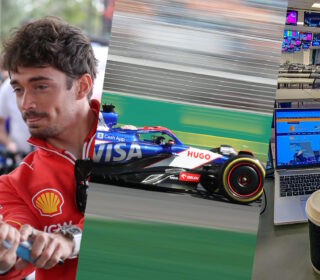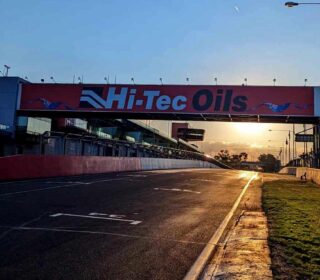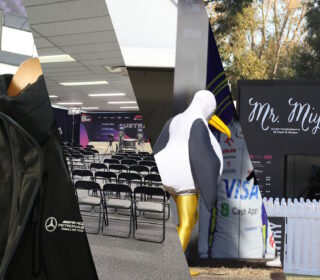The World War 2 engine being reborn for racing.. in Australia
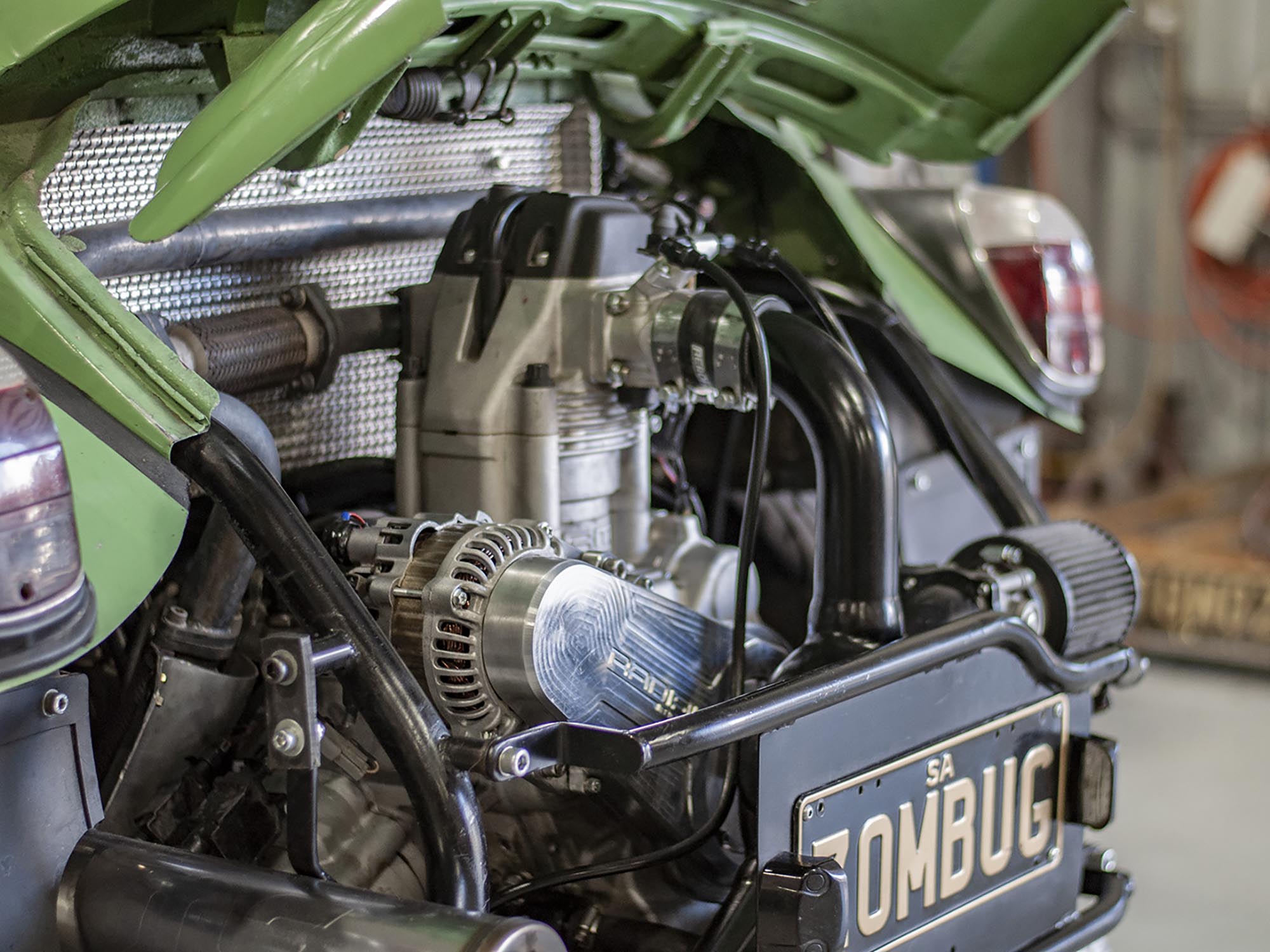
A FASCINATING new take on an old internal combustion engine concept has been launched in Adelaide, and it could lead to interesting motorsport applications moving forward.
South Australian business Radial Motion, part of the Bespoke Engineering group of companies, has unveiled a range of three-cylinder radial engines designed with potential aerospace, defence and motorsport applications in mind.
Radial engine technology is not new, in fact it came to the forefront in the 1920s as a simple, lightweight and most importantly, powerful way to power aircraft before the jet age.
Radial technology differs from other engines by having the pistons creating the combustion sequence emerging like a star from a central crankshaft, rather than in a horizontal / vertical line or ‘vee’ angle as seen most commonly in the automotive world.
Developed in wartime
FOLLOWING its invention in the early 1900s, both air and water-cooled Radial engines powered the early World War 1 fighters, however the technology rapidly developed in the between-war years as companies launched into an arms race to develop more and more powerful and reliable engines for military applications.
While the British side of the World War II allies generally remained wedded to their traditional in-line or ‘vee’ powerplants, like the iconic Rolls-Royce Merlin that helped make the Supermarine Spitfire so famous, big industry in the United States charged forward with the development of radical engine technology, lead mainly by the almost as iconic Pratt & Whitney.
After launching their first engine in 1925, P&W would go on to develop the most numerous aviation piston engine ever produced; building more than 175,000 of their R-1830 Twin Wasp engines over a long period.
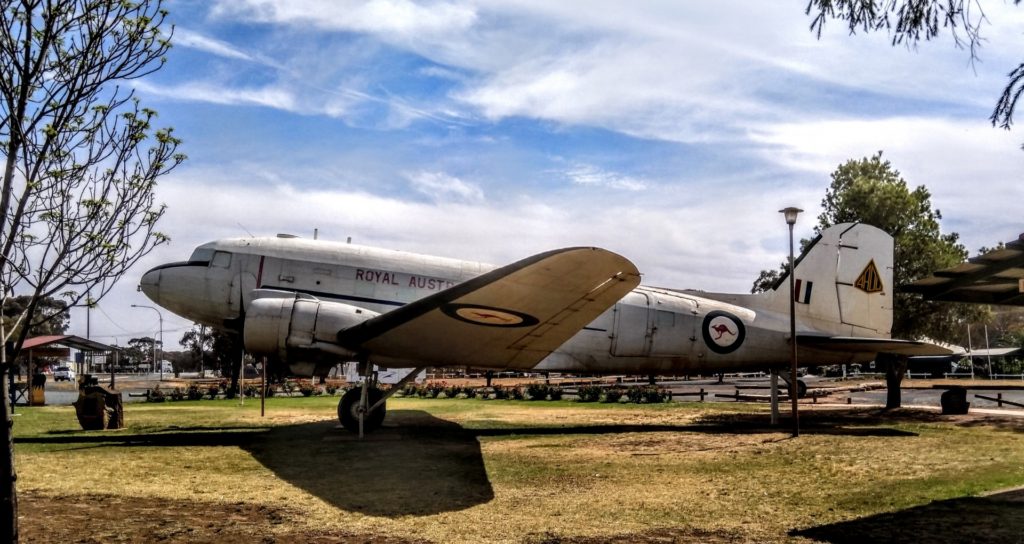
And if the engine itself doesn’t sound familiar, the planes it powered will: The R-1830 could be found firmly attached to either side of the fuselage of the iconic Douglas DC-3 “Dakota” transport plane, as well as the B24 Liberator bomber.
The 18-cylinder, 30-litre R1830 produced more than 1200hp in it’s ultimate form, before being developed further as the war progressed in to the R2000 model – which when bored to a more than 32-litre capacity could produce more than 1450hp at just 2,800RPM.
The Germans got into the act too via their take on the Radial – the most popular being the 14 cylinder BMW 801, an engine that produced more than 1500hp when it powered the Luftwaffe’s Focke-Wulf FW190 fighter and Junkers JU-88 bomber.
While the advent of the jet age stifled further significant development of radial engine technology, the concepts use as a lightweight, reliable and relatively powerful form of power for light aviation has seen ongoing development of the technology to this day.
A new take on an old idea
RADIAL Motion say their concept takes 1920s radial technology and adds modern design and technology innovations to create a powerplant that fits right into the modern world.
The company is promoting uses from defence, aerospace and even motorsport – the latter of which came almost by surprise when the company was looking do develop their three-cylinder prototypes.
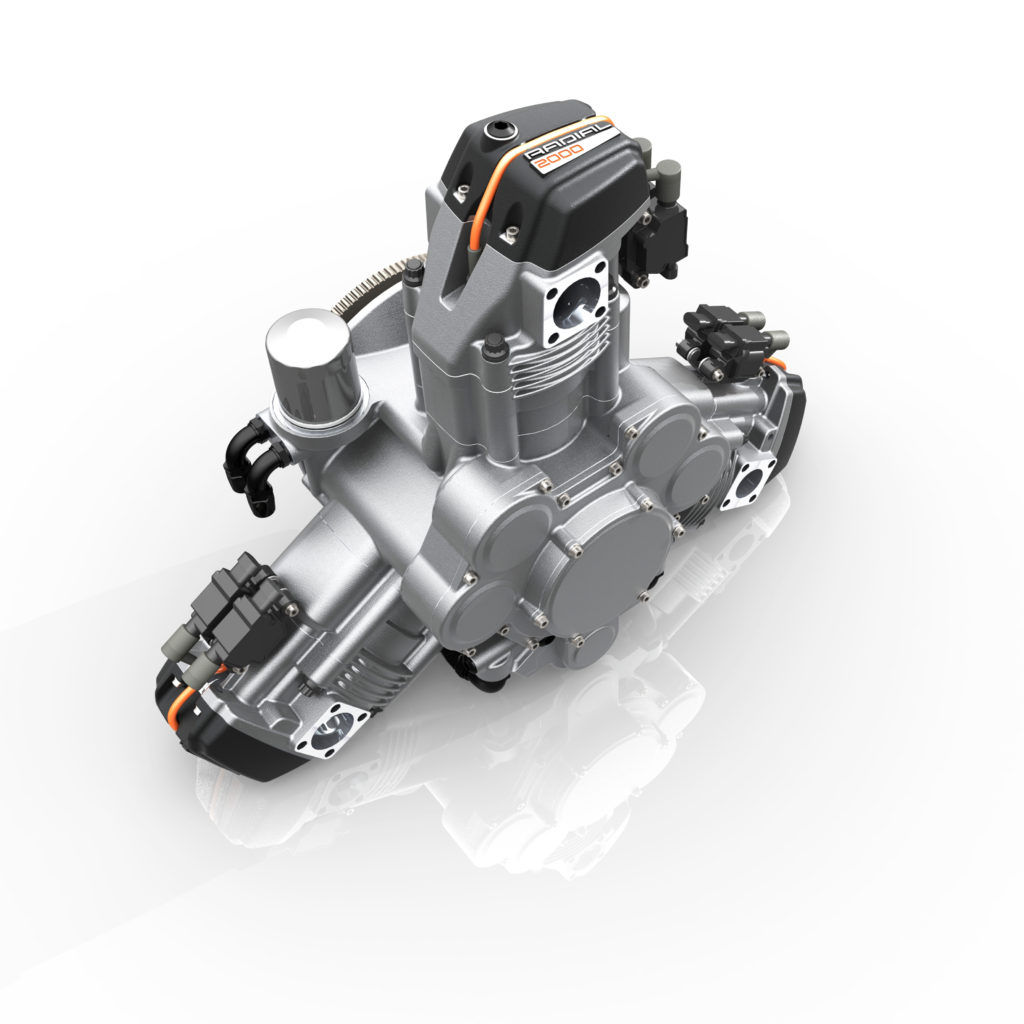
“(The engine) was designed as an aeroplane engine, but early on we realised that with a few minor changes it could fit into a car,” said Nick Mebberson, a Radial Motion director.
“That made testing prototypes a lot easier and safer, and also turned out to be a lot of fun.”
Based in Adelaide’s Southern Suburbs, Bespoke Engineering Group, via their Radial Motion offshoot, has been developing their radial concept since 2017.
The engine, conceptualised and created entirely in-house, is simple, modular and has interchangable parts designed to make it easy to operate and affordable.
Their first two offerings are a pair of 2.0 litre (1998cc) and 2.1 litre (2104cc) three-cylinder engines.
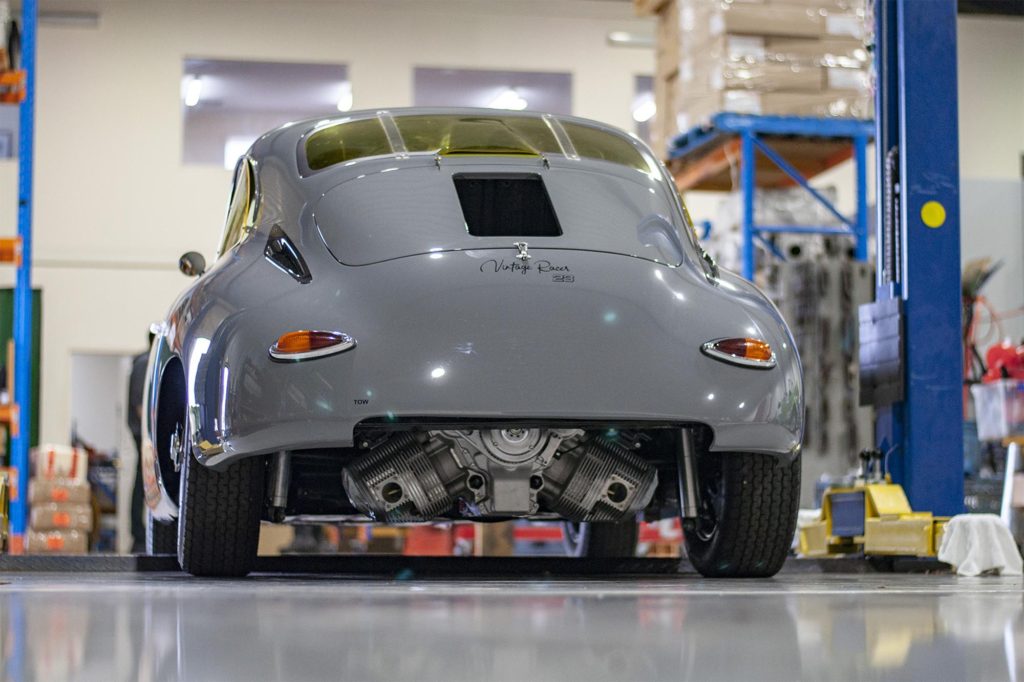
The design includes a common journal crank that pushes the 3 cylinders in a 120-degree radial configuration. Triple camshafts are gear driven and they actuate the overhead valves via pushrods. The current designs feature two valves per cylinder; a 2″ intake and 1.5″ outlet / exhaust valve.
A benefit of the Radial is that the engine is perfectly suited to forced induction, including Turbocharging or Supercharging, thanks to a design that can handle high cylinder pressures reliably.
Radial Motion says the engines produce ‘Up to 100HP (74kw) per litre’ in naturally aspirated form, meaning the 2.0 litre version should be good for somewhere in the vicinity of 145kw before any forced induction is added.
Torque is stated to be up to 150NM, again without forced induction.
While a majority of road car manufactures now feature predominantly turbocharged engines, the numbers compare favourably to similar capacity engines currently on sale in Australia.
For example, Hyundai’s 1.6 litre turbocharged inline four that powers he popular i30 – one of Australia’s best-selling cars – produces 150kw and 265nm, numbers all but matched by the three cylinder Radial without any sign of a hairdryer or blower hanging off the side.
Motorsport applications?
RADIAL Motion say the engine’s high specific output, light weight (75-95kg) and slim dimensions make for plenty of potential when it comes to motorsport offerings, not to mention the ease of maintenance and access when repairs may be needed.
In fact, the company has tested that theory by attaching one of their engines to a Type 1 Volkswagen Beetle and subjecting it to the rigours of this year’s Shannons Adelaide Rally – where the engine was reported to have performed admirably.
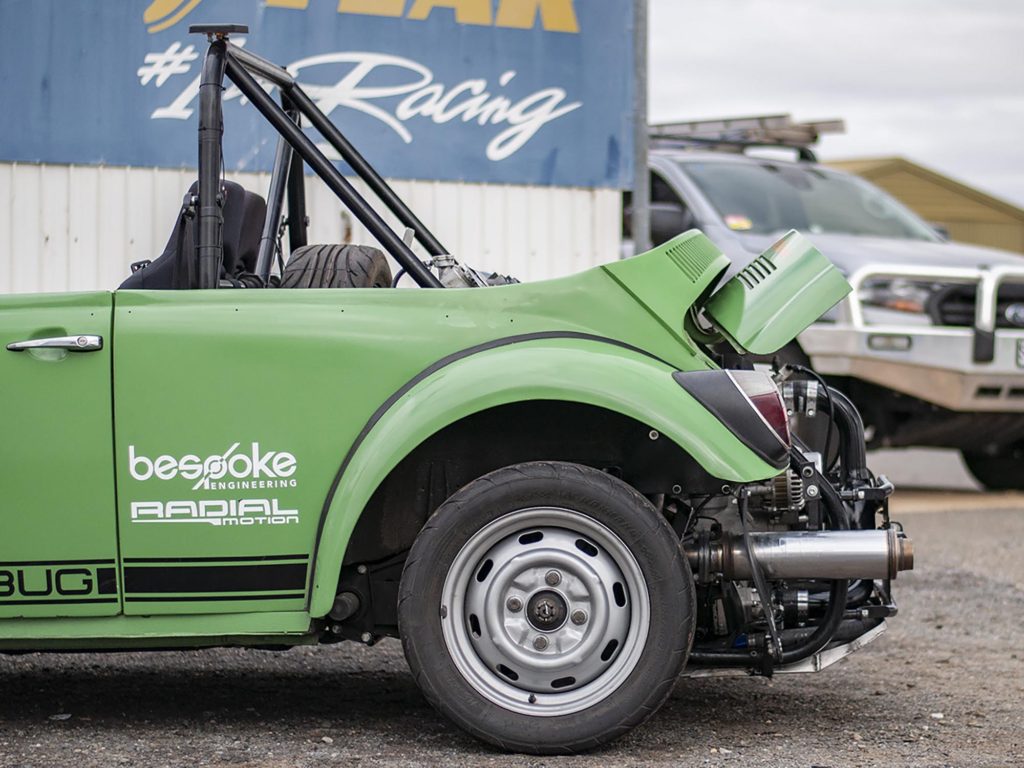
Radial engines have also been fitted to other cars, including a restored VW Kombi and, potentially sacrilegiously, to a stunning Porsche 356 coupe.
While motoring proves a safer test bed than attaching a brand-new engine to a plane and sending it skywards, it seems the the defence industry has been the first to take serious interest in the Radial Motion concept.
“We’re aiming to penetrate three market segments,” Nick Mebberson said.
“Aerospace, Defence and Motorsport. Already we are seeing a huge amount of interest from the defence sector, which has a focus towards businesses like ours that increase Australia’s sovereign capability.”
What racing applications come from this fascinating engineering company in Adelaide’s South remain to be seen – but in the true spirit of the Aussie motoring and motorsport industry, it is at the very least proof that the drive to innovate remains well and truly lodged within the local engineering culture.
It will be fascinating to see what this new take on an old concept can offer to the motorsport world moving forward.



